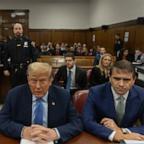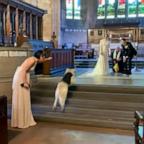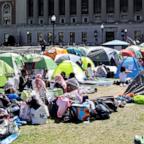Texas A&M
— -- Ten students, working for ABC News, visited nuclear reactors on 25 college campuses and found many gaping security holes, prompting a federal investigation. Here's what the team found at the Texas A&M University.
Reactor Name: Nuclear Science Center
Fuel: Highly enriched uranium, possession limit 17 kg.
Power Level: 1 MW
Began Operating: 1961
Location: A stand-alone facility in a wooded area two and a half miles off campus and 200 meters from a private aviation and commercial airfield. The George Bush Presidential Library is about one mile away.
Security Observations: No guards. No metal detectors. No ID required. No advance background checks. Tours available. Visible exterior security measures include a metal fence and at least one motion detector.
What We Found: The Nuclear Science Center is the larger of two reactors operated by Texas A&M. A detailed Web site encourages public tours and includes photos of the reactor, control room and facility. On arrival, names and home addresses are requested, but no ID is required. Bags must be left in a lobby adjacent to the main reactor building during the tour. Cameras are allowed on the tour. A nuclear engineering student led the detailed 90-minute tour, during which the Fellows stood above the reactor pool and videotaped the reactor pool and core, while the reactor was running. When a Fellow asked whether there were any guards at the facility, the tour guide, chuckled and said: "No, I mean, did you see any guards? Yeah, there's no guards and stuff."
A nighttime visit revealed a motion-sensitive light at the locked main gate.
University Reaction: The reactor is not much of a terrorist threat and security measures are adequate, said James Remlinger, manager of operations at the Nuclear Science Center. He stressed that while the uranium in the reactor core is highly-enriched, it would take "a lot of technology" to make a weapon out of it.
Remlinger said public tours are important because they "take the mystery" out of nuclear research for the public and train student tour guides to be future leaders of the nuclear community.
Steve Moore, the university's vice president of communications and chief marketing officer, said that the policy for tours changed after the Fellows visited the Nuclear Science Center. "We absolutely do it differently," he said. A photo ID is now required for a tour and tours must be scheduled a week in advance.
As far as the student tour guide's comment about guards, Moore said he is trying to reach the student. He said that guides are trained on what they can and cannot say to the public about security. He added that there is no lack of security at the reactor and there are measures in place that would not necessarily be visible on a tour.
Moore said the reactor is scheduled to be converted to low-enriched uranium next year.
Moore requested that ABC News post a university e-mail address for anyone with questions about the Texas A&M reactor. The address he provided is nscinfo@tamu.edu.
Additional Comment: As far as the access available at the Nuclear Science Center, "It's a shame and it shouldn't be that way," said Ronald E. Timm, a veteran security consultant who has analyzed the vulnerability of the nation's nuclear laboratories for the Department of Energy. "The bad guy owns it from a sabotage scenario."
The federal official responsible for security at the nation's campus reactors told ABC News that the absence of an ID check may have been a violation of security protocol at Texas A&M.
"It's something I'd want to take a look at," said Roy Zimmerman, director of the Office of Nuclear Security and Incident Response for the Nuclear Regulatory Commission.




